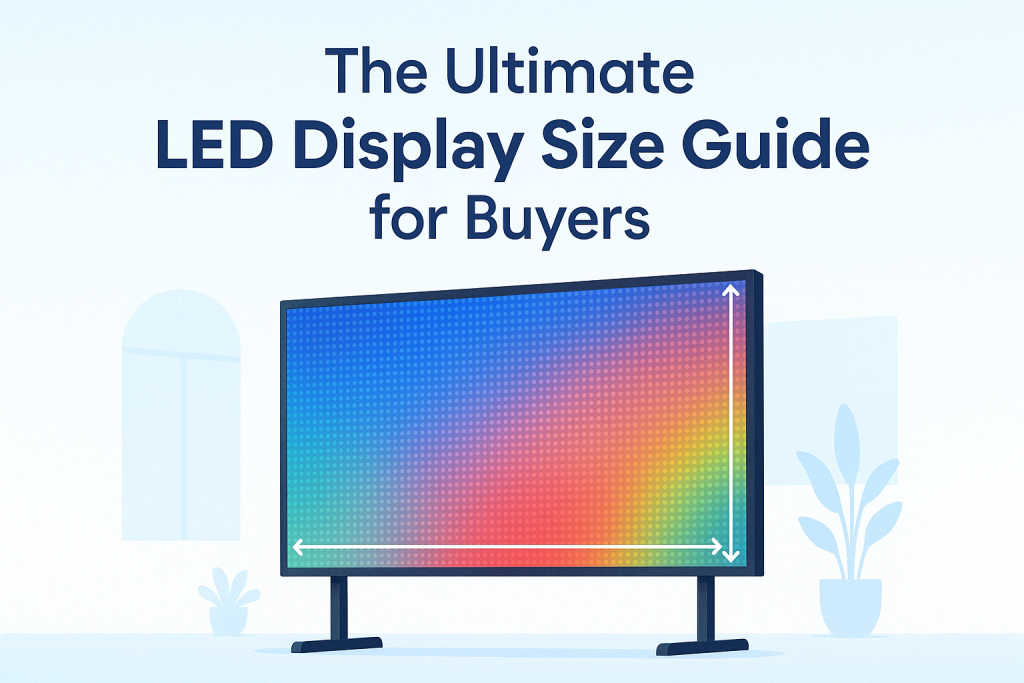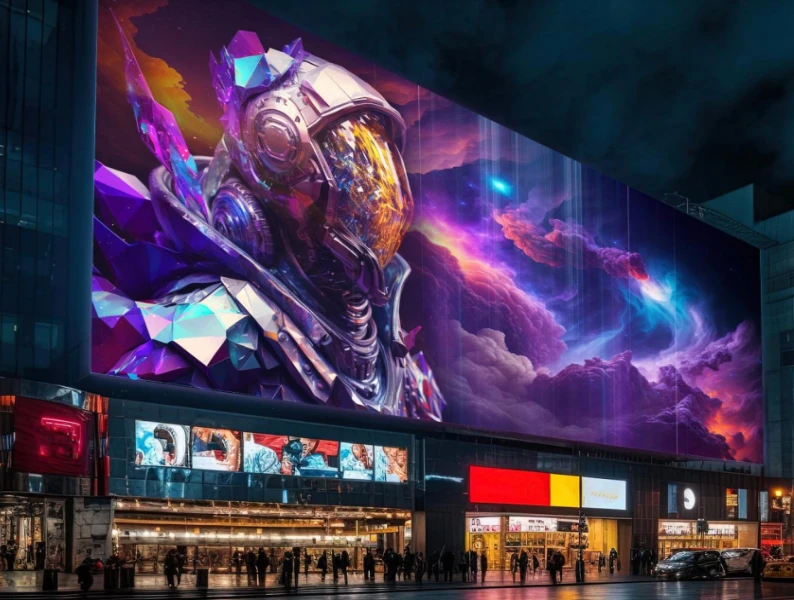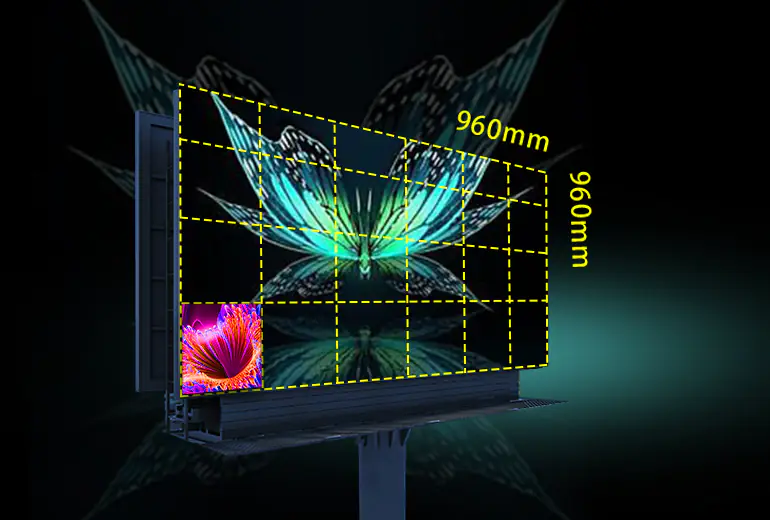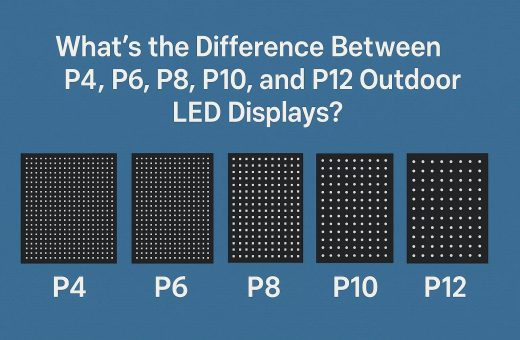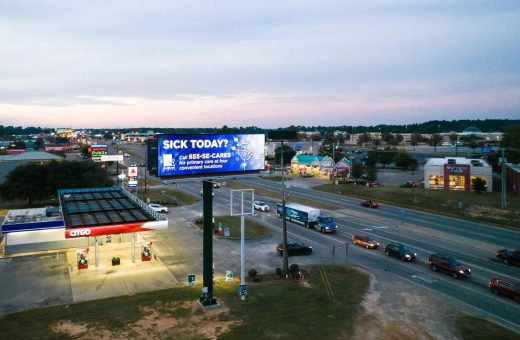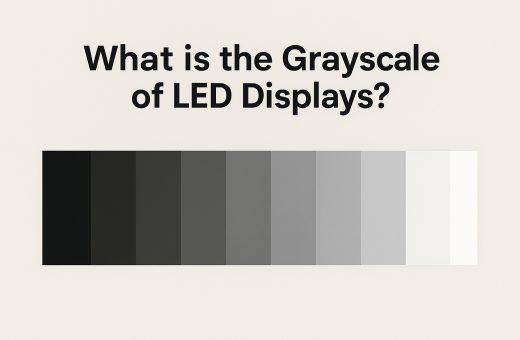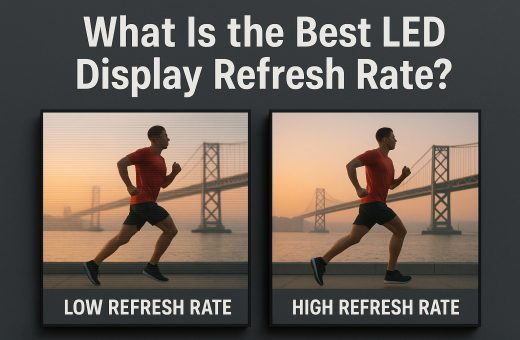Table of Contents
The size of an LED display directly affects how well the content is seen, how the audience responds, and whether the project achieves desired outcomes. A screen that is too small fails to convey the message effectively and engage viewers, while an oversized screen wastes space, increases costs, and may reduce image quality.
In this article, Chainzone will provide a clear and practical buying guide for LED display sizes, which will help you select the right LED screen size for your specific needs.
LED Display Size Explained
First of all, let us see what the term LED display size actually means.
1. What “Size” Really Means
LED display size refers to its physical dimensions (width and height), typically measured in meters or feet. Aspect ratio, which describes the proportional relationship between width and height, is equally important.
A common 16:9 ratio ensures compatibility with most video and image formats, maintaining content clarity and geometric integrity. Unusual aspect ratios may not align with standard content and can lead to image distortion, black bars, or content cropping.
2. Key Terminology for Size and Clarity
Understanding the following terms will help you assess how screen size, visual clarity, and viewing experience interact in any LED display setup.
- Resolution (Pixels)
Resolution refers to the total number of pixels across the screen, usually written as width × height. Higher resolution produces more detailed visuals, but its effectiveness depends on the screen’s physical size and the selected pixel pitch.
Common standard LED screen pixel resolutions are:
| Resolution Standard | Pixels (W × H) | Aspect Ratio |
| 720p (HD) | 1280 × 720 | 16:9 |
| 1080p (Full HD) | 1920 × 1080 | 16:9 |
| 2K (QHD) | 2560 × 1440 | 16:9 |
| 4K (UHD) | 3840 × 2160 | 16:9 |
| 8K (FUHD) | 7680 × 4320 | 16:9 |
- Pixel Pitch (mm)
This is the measurement of the center-to-center distance between two adjacent pixels on an LED display. For instance, P6.25 signifies that the distance between the centers of two neighboring pixels is 6.25 millimeters. A smaller pixel pitch delivers higher image resolution for close viewing, while a larger pitch suits long-distance viewing.
- Viewing Distance
It indicates the distance between the viewer and the display. Closer distances require a smaller pixel pitch for clarity, while larger distances allow for lower pixel density without reducing resolution. Below are common recommended pixel pitches for different viewing distances.
| Viewing Range | Recommended Pixel Pitch | Scenario Examples |
| Ultra-Close & High Detail (< 5 meters) | P1 – P5 (Ultra-fine pitches) | Close-up applications needing maximum detail. |
| Mid-Range Outdoor Viewing (5–10 meters) | P5 – P10 (Sharp visuals) | Storefront electronic signs, drive-thrus, and smaller stadium sections. |
| Long-Distance Impact (> 10 meters) | P10 – P16+ (High brightness & value) | Highway outdoor LED billboards, stadium screens, and landmark LED signage. |
Typical LED Display Size and Application
Typical LED display sizes can be broadly categorized into small, medium, and large, each serving different applications with optimal dimensions and features:
1. Small LED Display Size
Small displays are usually about 1 to 5 square meters. They are ideal for close-up viewing in indoor environments with limited space. Typical uses include retail store displays, small conference rooms, corporate meeting rooms, and minor event stages. Additionally, they often require fine pixel pitch, such as P2 and P2.5, to ensure clarity at short viewing distances.
2. Medium LED Display Size
Medium displays are usually 5 to 15 square meters. They are commonly used in larger indoor venues such as conference halls, indoor concert venues, and exhibition spaces. Their pixel pitches are generally higher, like P3 or P6, which provide good clarity for medium-sized audiences.
3. Large LED Display Size
Large displays can even exceed 50 square meters. They are often designed for maximum visual impact at great distances outdoors, including stadiums, outdoor festivals, shopping mall atriums, and arena concerts. The common pixel pitch can include P8 and P10.
For personalized advice on your applications, please click here to get in touch with us!
How to Measure LED Display Size
LED display size can be measured in several ways, such as:
1. Area Calculation
The most straightforward method is to measure the physical size of the LED display by its width and height. You multiply the width and height in meters or feet to determine the display’s total area.
Formula: Area = Width × Height
* Example:
If the display is 3 meters wide and 2 meters tall, the area would be:
3 m × 2 m = 6 square meters
2. Module-Based Calculation
LED screens are made of modular panels, and the size of each panel (or module) can be used to calculate the overall display size. The display is built by arraying these modules in rows and columns.
Formula: Display Size (in meters or inches) = (Number of Modules in Width × Module Width) × (Number of Modules in Height × Module Height)
* Example:
If one module is 500 mm (0.5 m) wide and 500 mm (0.5 m) tall, and there are 6 modules across the width and 4 modules across the height, the display would be:
Width = 6 × 0.5 m = 3 meters
Height = 4 × 0.5 m = 2 meters
Therefore, the display size is 3 m × 2 m, which is 6 square meters.
Picture shown: 960 mm × 960 mm cabinet LED screen size
3. Resolution-Based Calculation
Resolution-based measurement focuses on the pixel count. The number of pixels in width and height can determine the screen’s size based on the pixel pitch (the distance between adjacent pixels).
Formula: Display Size = (Number of Pixels in Width × Pixel Pitch) × (Number of Pixels in Height × Pixel Pitch)
* Example:
If the pixel pitch is 6 mm (0.006 m), the display has 1920 pixels horizontally and 1080 pixels vertically:
Width = 1920 × 0.006 m = 11.52 meters
Height = 1080 × 0.006 m = 6.48 meters
Therefore, the total screen size would be approximately 11.52 m × 6.48 m, which is around 74.65 square meters.
How to Choose the Right LED Display Size
In order to get the best LED display screen size for your project, consider the following factors:
1. Define Your Purpose and Application
Start by defining the purpose of the LED display. Is it for advertising, live events, information dissemination, or decorative applications? The intended application heavily influences the optimal size. For instance, a large-format display for an outdoor billboard will have different size requirements than a smaller, higher-resolution screen for an indoor control room.
2. Assess the Installation Environment and Available Space
The next step is to carefully examine the physical location where the LED display will be installed. Measure the available wall space, ceiling height, and any obstructions such as pillars or doorways. Remember to account for both the display’s footprint and maintenance access space.
For outdoor installations, environmental elements such as wind load and sun exposure might influence structural requirements and thus the practical size limitations.
3. Determine Viewing Distance and Pixel Pitch
Viewing distance also guides you in choosing the appropriate LED screen dimensions. For short viewing distances, you’ll potentially need a smaller display with higher resolution (smaller pixel pitch). For larger venues or outdoor displays, a larger screen with a higher pixel pitch can be sufficient, as viewers are further away.
4. Consider Content Resolution and Aspect Ratio
If your content includes high-resolution videos or detailed graphics, you’ll need a display large enough to render them effectively while preserving detail integrity. The aspect ratio (width to height) of your content is equally crucial—matching the display’s aspect ratio to your content prevents uneven stretching or black bars, ensuring a visually appealing presentation.
5. Budget Considerations
LED display size directly affects cost, not only for the display itself but also for mounting, power, and long-term maintenance. Larger screens require more support and infrastructure, which increases the cost.
However, excessive cost reductions may compromise effectiveness by undersizing the display. Always prefer a balanced LED display solution that provides necessary visual clarity without stretching the budget.
6. Consult with Experts
If you are unsure about choosing the right LED display size, it is worth consulting professionals. Chainzone is a global leader in LED display solutions with more than 20 years of experience.
Our team offers expert advice on screen dimensions, pixel pitch, and layout tailored to your requirements. Our products are backed by international certifications and strict quality testing. For reliable guidance and efficient project planning, Chainzone serves as a trusted global partner.
Wrapping Up
Choosing the right LED display size plays a key role in determining how well your content is delivered and received. Getting the size wrong can affect visibility, cost, and overall performance.
For expert support, Chainzone, a trusted partner, possesses more than 20 years of experience in the LED display industry. Our reliable products, certified quality, and project-specific guidance make us a strong choice for anyone looking to invest in a well-sized, long-lasting LED display!

